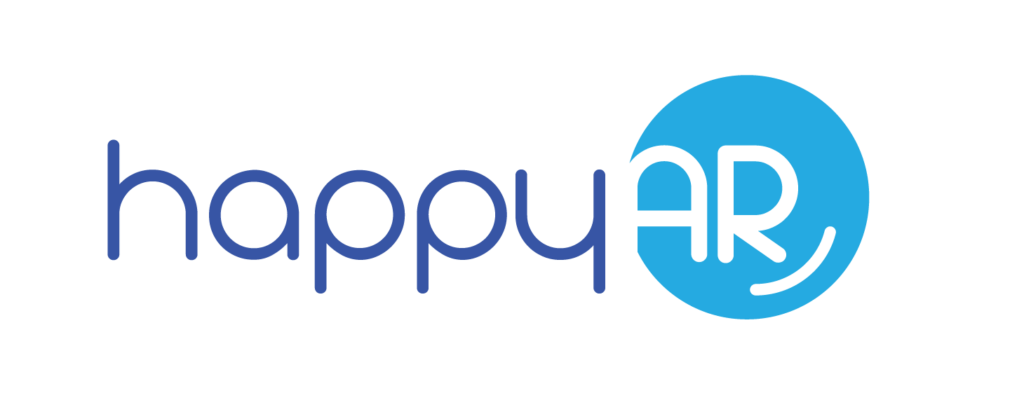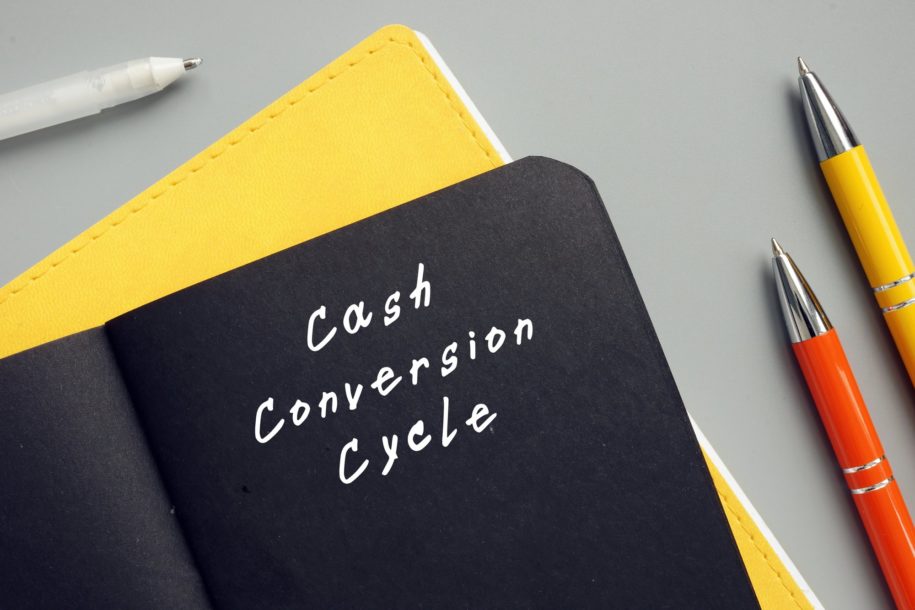A cash conversion cycle is a familiar term in accounting. It describes how long it takes to convert inventory into cash. The cycle considers the time required to sell inventory and collect receivables, as well as the time the company has for paying its own bills. In this article, we will cover both the cash conversion cycle and what a negative cash conversion cycle means.
There are three different factors involved in the cash conversion cycle formula, including days inventory outstanding, days sales outstanding, and days payable outstanding.

How Is the Cash Conversion Cycle Formula Calculated?
The cash conversion cycle calculation formula is:
Cash Conversion Cycle = Days Inventory Outstanding (DIO) + Days Sales Outstanding (DSO) – Days Payable Outstanding (DPO)
Each of the three factors involved in the cash conversion cycle formula must be individually calculated before they can be applied to the formula itself.
Days Inventory Outstanding, the first component of the formula, represents how long it takes your company to convert inventory into a finished good and complete the sales process. The formula for Days Inventory Outstanding is:
DIO = Inventory / Cost of Sales x 365
The next component of the cash conversion cycle formula is Days Sales Outstanding. Days Sales Outstanding, or DSO, indicates how long it takes for your company to recover outstanding receivables from its customers. It is calculated using the following formula:
DSO = Accounts Receivable / Net Credit Sales x 365
The final part of the cash conversion cycle formula is Days Payable Outstanding or DPO. DPO is calculated using the following formula:
DPO = Accounts Payable / Cost of Sales x 365
DPO represents how long it takes on average for your company to pay its bills.
Once all of these components have been calculated, business owners can apply them to the cash conversion cycle formula.
What Information Does the Cash Conversion Cycle Provide?
Companies that use the cash conversion cycle will know exactly how long it takes them to receive cash from their customers after initially investing in inventory. In general, the shorter the cash conversion cycle is, the better. Shorter cycles mean that a company gains access to the money it has used to create a product in a quicker amount of time.
You may compare cash conversion cycles between companies that have similar structures and industrial sectors.
This analysis will give you the best insight into your company’s performance versus another’s, but it’s not uncommon to compare the cycle times across entirely different companies. However, the analysis received from doing so is less likely to be relevant.
What Are the Advantages of Using the Cash Conversion Cycle?

The cash conversion cycle is a great KPI that can be used to glean certain information about a company. Common benefits include:
View of the Overall Picture of a Company
The cash conversion cycle gives its users an overall picture of the cash flow for a company. The shorter a cash conversion cycle is the faster access to cash the company will have. This metric can be an excellent statistic to have as a starting point for potential improvement.
Insight into the Company’s Financial Health
A company that has a short cash conversion cycle is typically doing well. They don’t have significant problems with customers who don’t pay on time or products that don’t sell. This cycle length reduces the potential for company liquidation, which occurs when bills aren’t paid, and money isn’t collected.
A Benchmark for Management
Once you’ve established what your cash conversion cycle currently is, you can use it as a benchmark. If cycle times decrease, the company is improving its performance. However, if they increase, it’s likely that problems have developed that need to be addressed.
What Are the Disadvantages of the Cash Conversion Cycle?
While the cash conversion cycle can provide insight into company performance, it’s important to realize that the measurement does have disadvantages.
Different Between Industries
It isn’t easy to use the cash conversion cycle between industries. For example, a manufacturer may require many days before they are able to produce a product for sale. This lag can increase the DIO and potentially the DSO.
If you were to compare a manufacturer with another company that produced items quickly, like a company in the services industry, you’d likely see significant differences in the cash conversion cycle time. However, that doesn’t mean that one is better than the other. To know more, you’d need to know what was realistic for both industries.
Focusing Too Much on CCC Improvement Can Result in Unhappy Business Relationships
While CCC is a great measurement to consider, make sure it’s not the sole focus of the business. You’ll want to walk a fine line between keeping a reasonable cash conversion cycle time while also keeping good customer and vendor relationships.
To improve CCC, you have to sell inventory and collect money as quickly as possible. However, if you put too much pressure on your customers for payment, they may seek other companies offering similar products.
The other way to improve CCC is by delaying payment to your vendors. However, if you become too far past due, your vendors may refuse to sell to you. This refusal can be disastrous if you’re dependent on their product.

What Is a Negative Cash Conversion Cycle?
Up to this point, we’ve considered the basic understanding of what a cash conversion cycle is and how to calculate it. We’ve assumed that the formula will result in a positive number of days.
However, it is possible for the cash conversion cycle to result in a negative number. This result is an enviable position for a company to be in and can result in a significant amount of cash on the balance sheet and great working capital.
A negative cash conversion cycle means that it takes your company longer to pay your expenses than it does to sell your inventory and collect your revenues from your customers.
Those with a negative CCC are able to essentially finance their operations with little outside help in the form of investors’ capital and instead use their suppliers for assistance.
How Can a Company Achieve a Negative Cash Conversion Cycle?
To obtain a negative cash conversion cycle and greater operational efficiency, a company must be very deliberate in its actions. There are several ways to do so.
Reduce the Amount of Inventory Held
In some cases, businesses are able to reduce the amount of inventory that they hold. This approach is more likely for those companies that don’t rely on foreign manufacturers as part of their production process.
To improve inventory hold times, it’s best to build a strategic partnership with your suppliers. Ask them to hold an inventory buffer for you in case demand for your product increases.
Another way to reduce inventory is to reduce the variety of products that you offer. If you see that some products don’t perform well and have limited sales, try to adjust your inventory to reflect this.
Reduce Accounts Receivable
For companies that offer their products using credit sales, an accounts receivable balance is common. Reducing that balance by increasing inflows is key to improving the cash conversion cycle. You can do this by negotiating new sales terms for your customers or by asking for some payment upfront. This setup results in less time for the customer to pay you.
However, you must be very careful if you decide to negotiate new sales terms and ensure that your customers won’t walk away in search of another business that will sell them similar products on better terms.
Businesses that work in the eCommerce sector are typically able to reduce accounts receivable quickly by selling their products upfront or when they ship. This strategy reduces the amount of time it takes to convert an online retailer’s sale to cash.
Increasing Accounts Payable
Another way to help your company obtain a negative cash conversion cycle is by controlling your liabilities balance. If you negotiate with your vendors and pay suppliers over a longer period of time, your business may be able to achieve a negative cash conversion cycle.
Not all suppliers will be happy accepting longer payment terms. After all, they have their own cash conversion cycles that they need to worry about. However, if you’re relentless and have a strong relationship with them otherwise, you may be able to convince them to accept longer terms.

How Does a Negative Cash Conversion Cycle Reflect on My Financial Statements?
If you attempt to follow the guidelines and reduce your cash conversion cycle, you may notice a few things that will occur on your balance sheet and income statement.
Higher Revenues
The first thing you may see is higher revenues. This growth occurs as you continue to build your cash balance, allowing you to invest in more inventory and sell it quickly. If you employ the strategies for obtaining a negative cash cycle or a lower CCC, you can compare your revenues over time and see how they improve.
Declining Accounts Receivable Balance
Since you will be obtaining payment for your goods or services, you’ll see your accounts receivable balance decrease. You may also notice a decrease in the average aging of your receivable balances.
Increasing Accounts Payable
The changes to your processes may result in an increase in your accounts payable balance. This increase occurs since you will be paying your vendors over a longer period of time. The average aging of your accounts payable balance will likely increase as well.
Improved Liquidity
With greater access to cash, your business will have increased liquidity. This increase is great, as it means your company will be better equipped to handle any potential downturns that may occur. You also won’t need to rely on outside capital for funding.
HappyAR is a seamless SaaS that quickly and easily boosts your accounts receivables work. We have simple monthly pricing that includes unlimited users and unlimited invoice escalations. There's no long-term contract, and you can try HappyAR for free.

